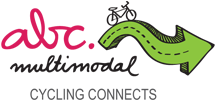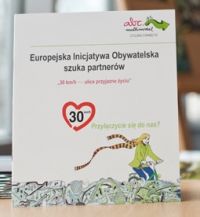PUMA: Promoting 30 km/h - streets for living
PUMA published a booklet promoting the activities undertaken within the framework of the ABC Multimodal project. The booklet includes also the European Civic Initiative campaign entitled „30 km/h – streets for living” for good reasons:
Local self-governments and residents of towns and cities where cycling plays a very small part in daily mobility (considered in the PRESTO project documents as starter cities) very often have difficulties in recognising, that a cyclist is a legitimate user of the carriageway, together with motorised traffic.
As a result of it the road infrastructure development policy in such neighbourhoods is implemented without any attempt to question the tacitly adopted assumption that driving with speeds above the 50kmh limit contributes to the increase in the throughput capacity of main traffic corridors in urban areas.
Such a mindset leads to a very costly and practically ineffective policy of striving to segregate the non-motorised (cycling and walking) traffic from the motorised traffic. Another unfavourable result is the excessive amount of investment outlays on the construction of fast, seemingly collision-free motorised traffic corridors, what undermines the subjectively perceived level of traffic safety and increased noise levels in urban areas.
It results in reduced propensity to resign from daily car commuting journeys for more benign mobility modes. No Polish city (in spite of presence of stipulation about observation of sustainability principles in the state constitution and the fact of signing the Brussels Charter) attained the assumed changes in modal split. The share of walking in them continuously falls, the share of public transport journeys goes down as well, cycling remains at very low or completely unmonitored levels while the share of motorised trips continuously increases.
The chances for a step improvement in the level of comfort and safety of cycling and walking traffic as a result of traffic calming in the existing street network are being lost and the local development becomes clearly unsustainable. High levels of road traffic accidents and congestion induces the decision makers to allocate substantial resources on the extension of infrastructure created with the motorised traffic in mind. It is considered either as a principal transport mode or, even worse, as the only transport mode worth serious consideration. The quality of facilities allowing to overcome the barrier effect of new road infrastructure for the non-motorised users is thus lower and lower. The comfort of cycling and walking near the public transport hubs is also deteriorated, resulting in a vicious circle of urban decay.
The “30kmh – streets for living” is supposed to slow down or even to reverse the direction of the above mentioned processes, in line with the main assumptions of the ABC Multimodal project.
You can see and download the booklet here.





